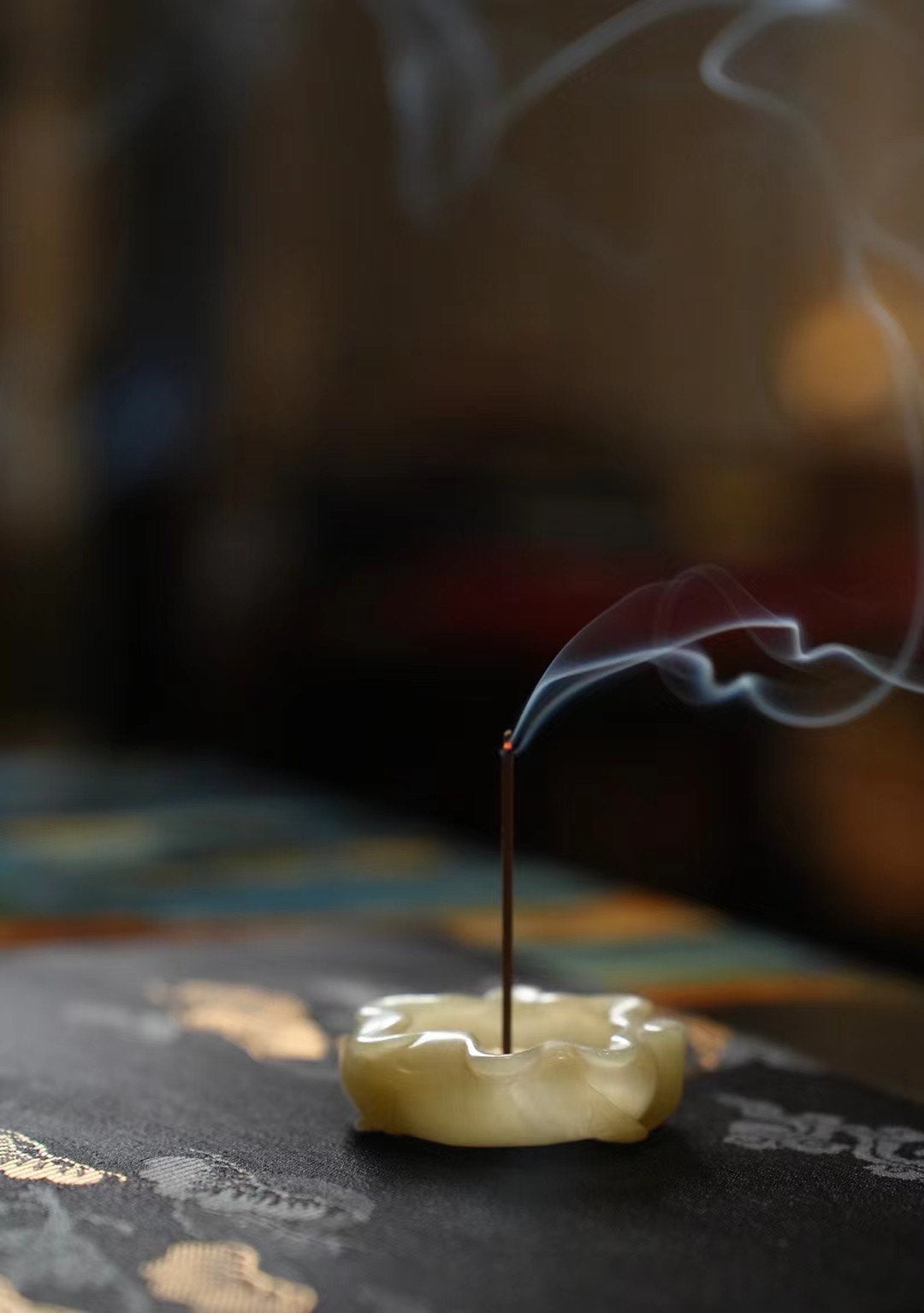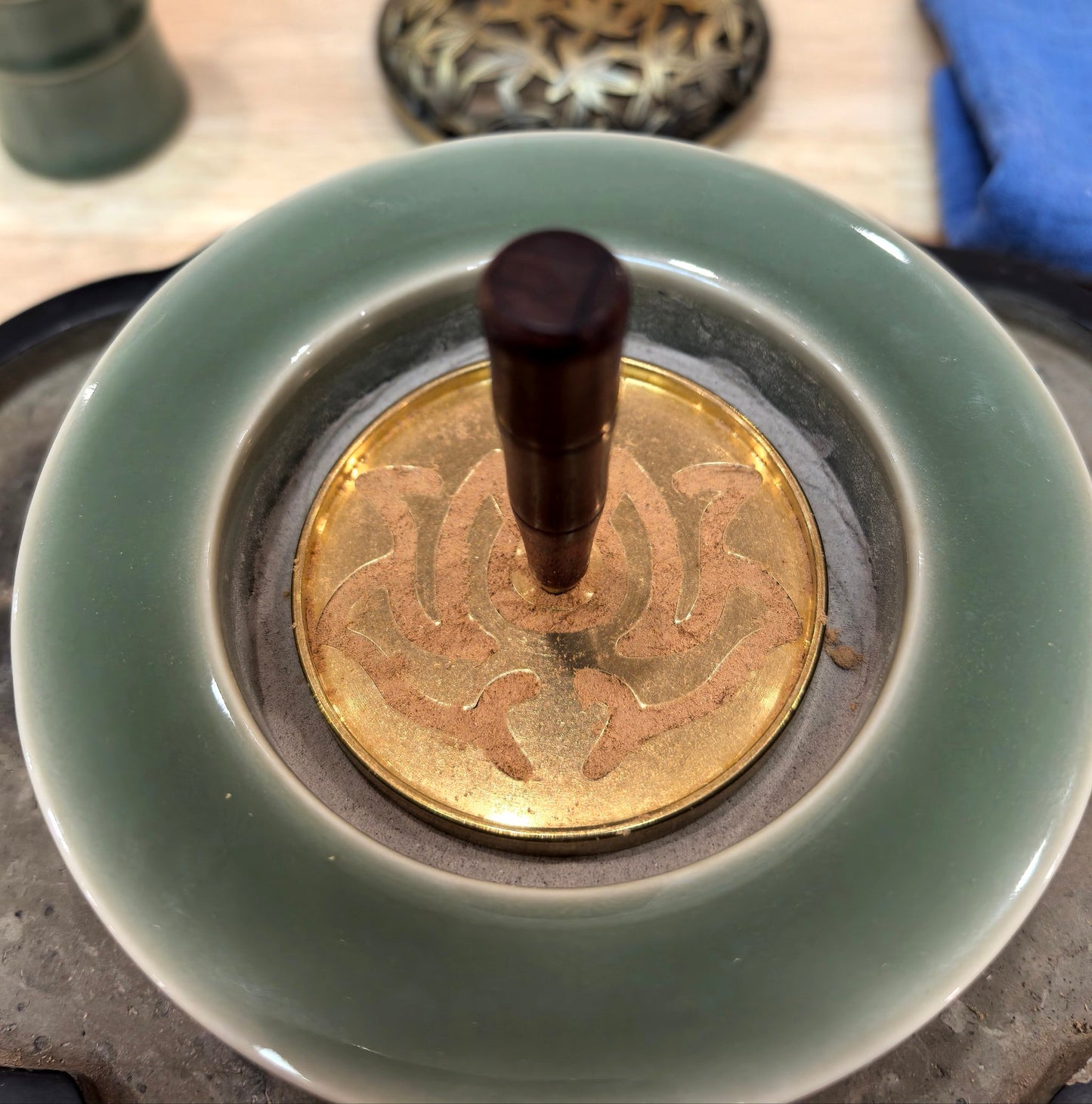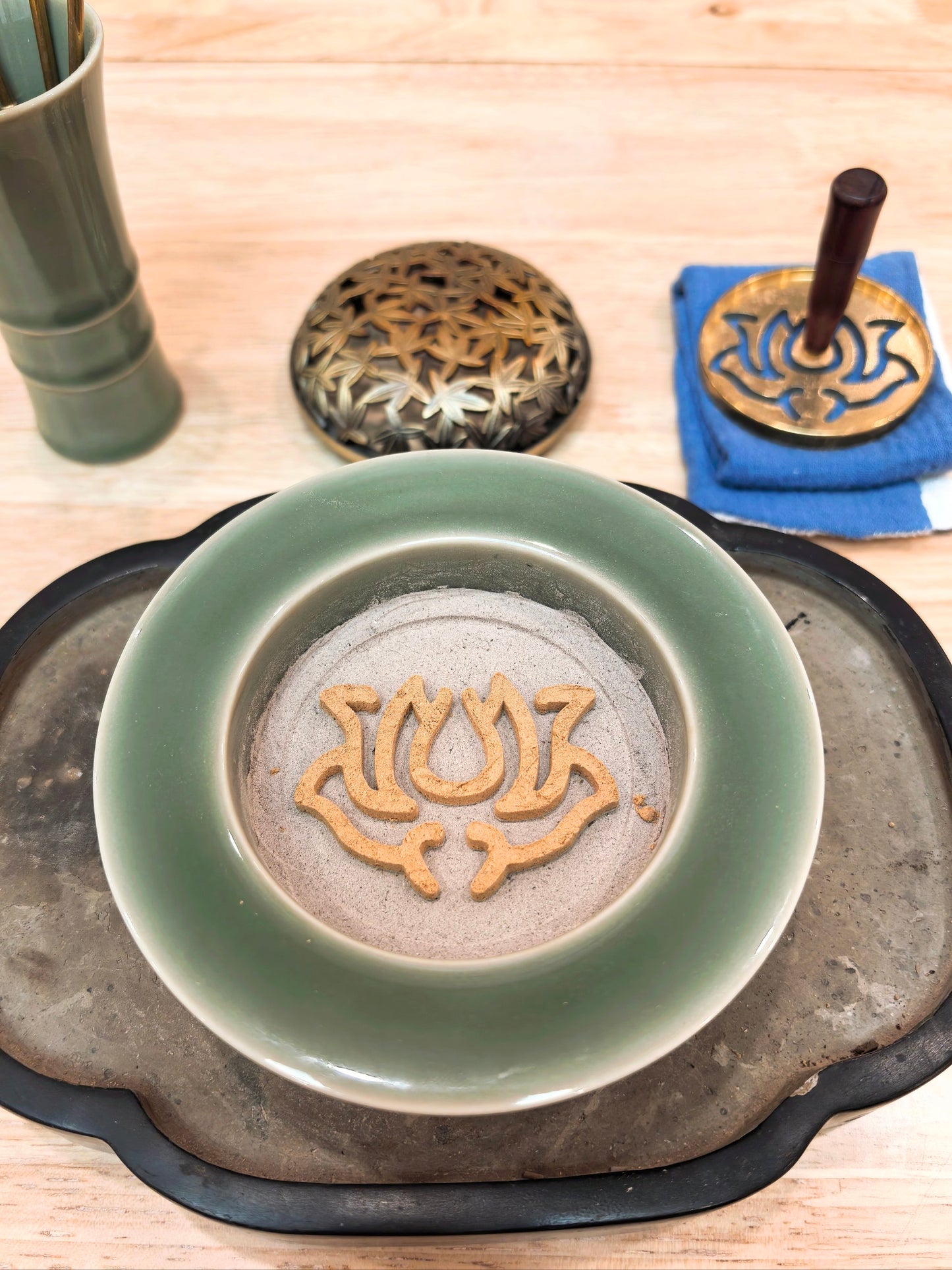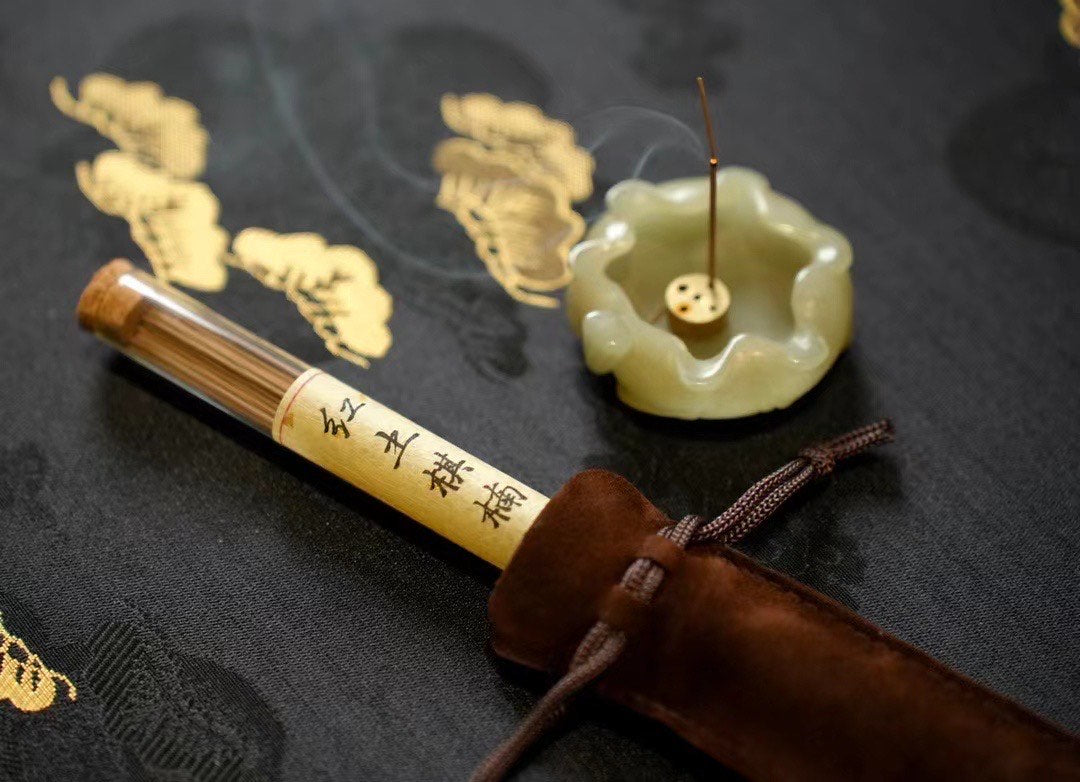东方道器
Chinese Incense Making: An Intangible Cultural Heritage of China、 中国制香技艺
Chinese Incense Making: An Intangible Cultural Heritage of China、 中国制香技艺
无法加载取货服务可用情况
**Chinese Incense Making: An Intangible Cultural Heritage of China**
**中国制香技艺:非物质文化遗产**
**I. Historical Roots & Cultural Significance**
**一、历史渊源与文化内涵**
1. **Ancient Origins:**
**源远流长:**
China's incense use dates back to antiquity, initially for rituals and dispelling pestilence. The Silk Road (Han Dynasty) introduced exotic fragrances (e.g., agarwood, sandalwood, frankincense), enriching the culture.
中国用香历史可追溯至上古时期,最初用于祭祀、驱疫避秽。丝绸之路(汉代)引入了外来香料(如沉香、檀香、乳香),丰富了香文化。
2. **Sacred Connection:**
**礼敬天地,沟通神明:**
Incense is central in sacrifices and Buddhist/Taoist rites, serving as a bridge between humans and the divine. "Incense and fire" (Xianghuo) symbolizes cultural continuity.
香在祭祀、佛道仪式中是核心媒介,沟通人神。“香火”一词象征传承与延续。
3. **Cultivation & Well-being:**
**修身养性,颐养身心:**
Confucianism saw incense as self-cultivation; Daoism linked it to longevity; Traditional Chinese Medicine (TCM) utilized aromatic herbs for healing and purification.
儒家视用香为修身;道家关联香与长生;中医运用芳香药材治疗与净化。
4. **Scholarly Art & Aesthetics:**
**文人雅事,生活美学:**
During the Tang-Song golden age, incense appreciation (alongside tea, flower arranging, painting) became a refined scholarly pursuit, integrated into daily life.
唐宋鼎盛期,品香(与茶、花、画并列)成为文人雅事,融入日常生活。
5. **Cultural Influence:**
**文化载体:**
Incense deeply influenced literature, painting, music, and artifacts (burners, censers, sachets).
香文化深刻影响了文学、绘画、音乐及器物(香炉、香囊)。
**II. Core Techniques & Features**
**二、核心技艺与特点**
1. **Natural Materials:**
**道法自然,取料天然:**
Uses primarily plant-based ingredients (agarwood, sandalwood, herbs, flowers, resins), emphasizing natural sources and quality. Animal-derived scents (musk, ambergris) are now rare/avoided for conservation.
主要使用天然植物原料(沉香、檀香、草药、花卉、树脂),慎用/不用动物香料(麝香、龙涎香)以保护生态。
2. **Art of Blending (He Xiang):**
**君臣佐使,配伍精妙:**
Blending follows TCM's "Monarch-Minister-Assistant-Envoy" principle. Scents are harmonized based on their properties and effects.
遵循中医“君臣佐使”原则,依据香材性味归经调和香气与功效。
3. **Processing Methods:**
**炮制工艺,匠心独运:**
Raw materials undergo meticulous preparation (Sorting, Steaming, Boiling, Roasting, Honey/Herb-frying, Drying) to enhance quality and remove impurities.
原料需精细炮制(修制、蒸、煮、炒、炙、烘焙)以提升品质、去除杂质。
4. **Forming & Aging:**
**合香成型,工序严谨:**
Processed materials are ground, mixed with natural binders (e.g., elm bark powder, honey), shaped (sticks, coils, cones, pellets), dried, and crucially **aged** for months/years. Aging mellows and deepens the fragrance.
炮制后研磨,加天然粘合剂(榆皮粉、蜂蜜)成型(线香、盘香、塔香、香丸),干燥后**窖藏**数月/数年,使香气醇和圆润。
**III. Major Schools & Regional Styles (Selected ICH Listings)**
**三、主要流派与地域特色(部分非遗项目)**
* **Fujian Incense (Yongchun):**
**福建香(永春):**
Quanzhou's Yongchun County ("China's Incense Capital") specializes in bamboo-core sticks & health/ritual incense. *ICH Example: Traditional Incense Making (Yongchun).*
泉州永春县(“中国香都”)擅长篾香及养生/祭祀香。*非遗代表:永春传统制香技艺*。
* **Guangdong Agarwood (Guan Xiang):**
**广东莞香:**
Dongguan is famed for premium agarwood (Guan Xiang) and elegant agarwood-based blends. *ICH Example: Guan Xiang Making Techniques.*
东莞以顶级沉香(莞香)及沉香合香著称。*非遗代表:莞香制作技艺*。
* **Jiang-Zhe Scholar's Incense:**
**江浙文人香:**
Reflects literati traditions (Jiangsu/Zhejiang), emphasizing subtle, poetic scents for "heated-ash" incense (pellets/powder), using refined blends with flowers/fruits.
体现江南文人传统,追求幽微意境,多用于隔火熏香(香丸/香粉),常融入花果元素。
* **Beijing Imperial Incense:**
**北京宫廷香:**
Inherits Ming-Qing court techniques, using luxurious materials (e.g., agarwood/sandalwood) for grand ceremonial/health incense.
传承明清宫廷技艺,用料奢华(沉檀),制作祭祀/养生用香。
* **Tibetan Incense:**
**藏香:**
Unique Tibetan Buddhist incense. Uses local juniper, herbs (saffron, snow lotus), minerals, with strong medicinal/ritual properties. *ICH Example: Tibetan Incense Making (Nimu - National Level).*
藏传佛教特色用香。主料柏木,加入藏药(藏红花、雪莲)、矿物,香气浓烈,具祈福疗愈功效。*非遗代表:藏香制作技艺(尼木 - 国家级)*。
**IV. ICH Protection & Value**
**四、非遗保护与传承价值**
1. **Protection Status:**
**保护现状:**
Recognized at national/provincial/city levels. Examples: Tibetan Incense Making (National), Guan Xiang Making (National).
已列入国家/省/市级非遗名录。如:藏香制作技艺(国家级)、莞香制作技艺(国家级)。
2. **Inheritance Value:**
**传承价值:**
* Carries Chinese cosmology, ethics, aesthetics, and rituals.
*承载中华民族宇宙观、伦理观、审美观及礼仪传统。*
* Showcases ancient wisdom in natural material use and craftsmanship.
*蕴含对自然材料的认知智慧与精湛工艺。*
* Promotes natural, healthy lifestyles aligned with modern values.
*推广天然香品,契合现代健康环保生活方式。*
* Provides spiritual solace in fast-paced society.
*在快节奏社会中提供精神慰藉。*
* Boosts cultural industries and rural economies (e.g., Yongchun, Dongguan).
*促进文化产业及乡村振兴(如永春、东莞)。*
* Acts as a cultural ambassador internationally.
*是国际交流的文化名片。*
**V. Contemporary Preservation**
**五、现代传承与发展**
* **Training inheritors** via master-apprentice programs.
*通过师徒制培养传承人。*
* **Academic research** on ancient recipes and techniques.
*研究古方与技艺。*
* **Productive preservation** – Making traditional incense sustainably for modern markets.
*生产性保护 – 结合现代标准制作传统香品。*
* **Cultural promotion** through exhibitions, workshops, and demonstrations.
*通过展览、讲座、体验课推广文化。*
* **Innovative fusion** – Creating new scents and applications while respecting tradition.
*创新融合 – 在传统精髓上开发新香方与应用场景。*
**Conclusion**
**结语**
Chinese incense making is an art of scent, a magic of time, and a crystallization of Chinese wisdom and aesthetics. From ancient altars to scholars' studios and everyday life, its fragrance transcends millennia, speaking of harmony between humanity and nature, nurturing body and soul today. Preserving this heritage honors history and safeguards a precious cultural legacy for the future.
中国制香是嗅觉的艺术、时间的魔法、中华智慧与美学的结晶。从上古祭坛到文人书房,再到日常生活,其馨香穿越千年,诉说着天人合一的古老智慧,滋养着今人的身心。保护这一遗产,是对历史的尊重,也是为未来留存宝贵的文化瑰宝。
Share













